Looking for information about replacing a foundation? If so, don’t hit that back button because you’ve landed on the right page. In this article, we’ll review what causes foundation problems, repair options, when a foundation might need replacing, and more.
What Causes Foundation Problems?
Foundation problems occur for various reasons, including soil movement, water intrusion, and natural disasters such as earthquakes. Let’s delve into these factors to understand their impact on foundations.
Soil movement
Soil movement under the foundation can cause “differential settlement.” This is when a foundation settles into the ground unevenly. While a small amount of uniform foundation settlement is typical, differential settlement is another matter. Differential settlement places a lot of stress on a foundation and will eventually cause severe structural damage if it isn’t repaired.
So, what causes soil movement under the foundation?
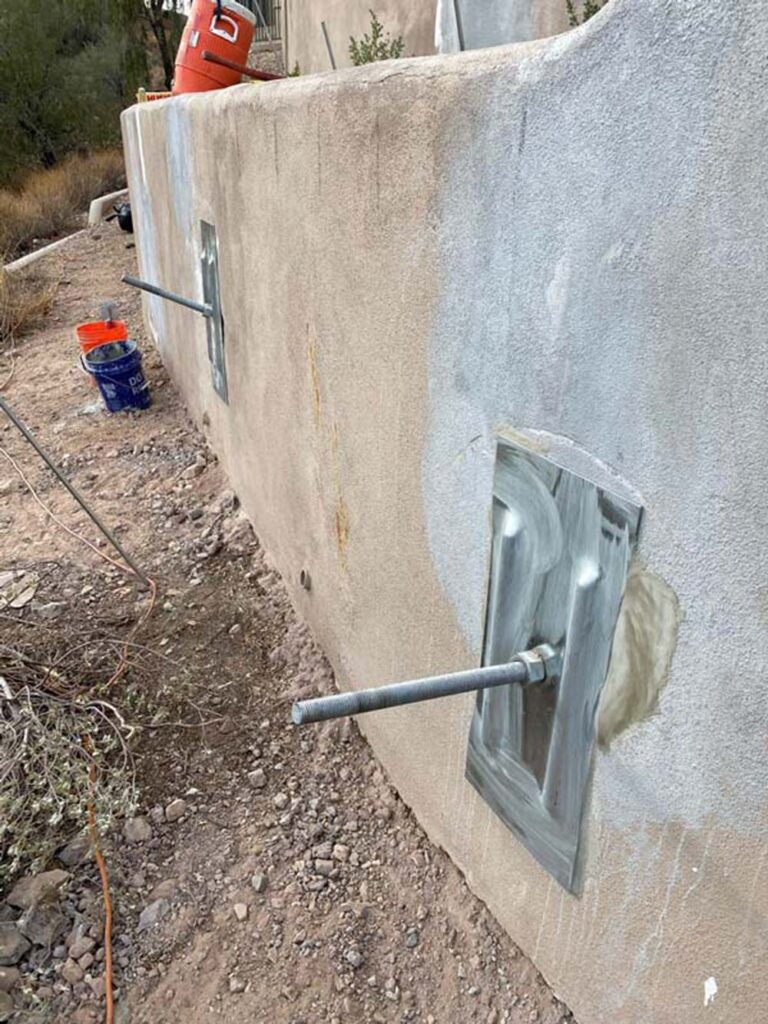
- Expansive soils have a high percentage of clay, and because of this, they expand and contract as they get wet and dry. This causes movement under the foundation leading to differential settlement.
- Something similar happens with erosion-prone soils. Erosion occurs when the soil beneath the foundation is washed away due to heavy rainfall or flooding. This causes uneven settlement, which puts pressure on the foundation, leading to foundation damage.
- Natural disasters such as earthquakes also cause movement in the ground under the foundation resulting in differential settlement. Even buildings designed to withstand earthquakes can still suffer foundation damage due to the intensity of the seismic waves.
- Poor construction techniques can also cause differential settlement. For example, the soil must be adequately compacted before anything is built on it. If this isn’t done, the structure could settle into the ground unevenly after it’s built.
Water intrusion
Water intrusion is another major cause of foundation problems. Water can seep into the foundation through cracks in the walls or floors, causing dampness. This moisture can lead to mold and mildew growth, weakening the foundation.
Poor drainage around a foundation can also cause hydrostatic pressure to build up and press against the foundation wall. Hydrostatic pressure is strong enough to push water through invisible cracks in a foundation wall and cause it to bow inward and even crack.
Identifying and addressing these foundation problems as early as possible is essential to prevent further damage. Regular inspections and proper maintenance can go a long way in averting major foundation problems.
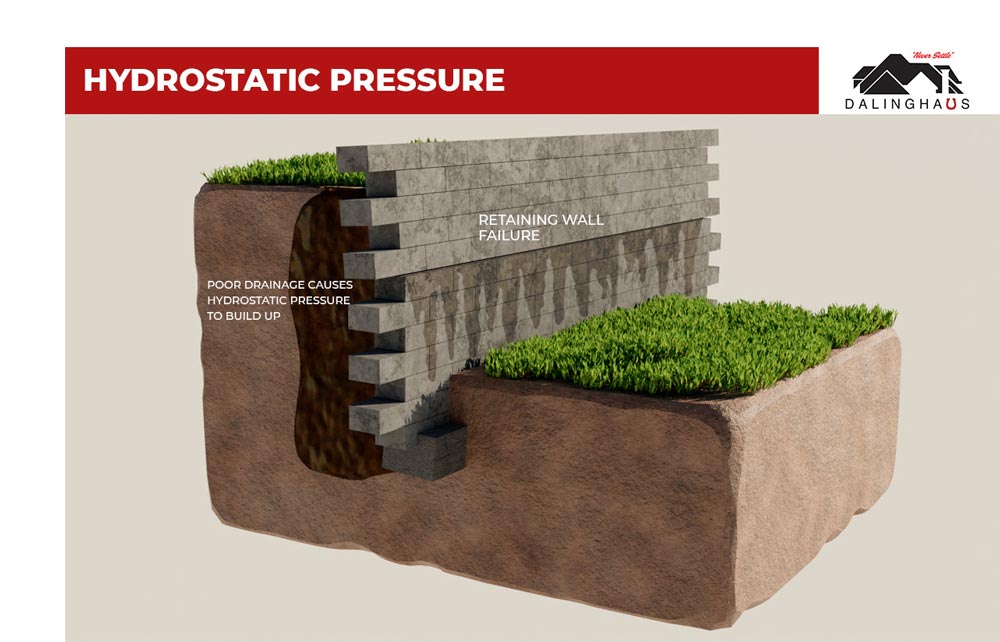
Most Foundation Problems Can Be Repaired
Most homeowners fear foundation problems and assume they must replace the foundation altogether. However, this is usually not the case. Most foundation problems can be repaired, and only a few rare cases require replacing the foundation. The key is to identify the signs of foundation problems as early as possible and address the issue with the help of a professional.
Foundation repair contractors have a range of solutions to fix most foundation problems. They use techniques such as underpinning to stabilize the foundation and lift it back to its original position. These methods are almost always less expensive than replacing the entire foundation, and they can be completed in a much shorter amount of time.
For more information, see Foundation Repair Scams (What to Look Out For).
Foundation Repair Options
When it comes to foundation repair, there are several different options available to homeowners depending on the issue they are facing. One of the most common problems homeowners face is differential settlement. Differential settlement, as noted above, occurs when one part of the foundation settles more than other parts. Various factors, including soil composition, drainage issues, and poor construction practices, can cause this.
For differential settlement
One solution for repairing differential settlement is underpinning with push or helical piers. Underpinning involves adding additional support by extending the foundation down to load-bearing soil. Push piers are installed by driving steel tubes through the unstable soil layer until they reach a stable soil layer. Helical piers, on the other hand, are installed by screwing steel anchors into the ground. Both methods provide additional support to the foundation and help to stabilize it.
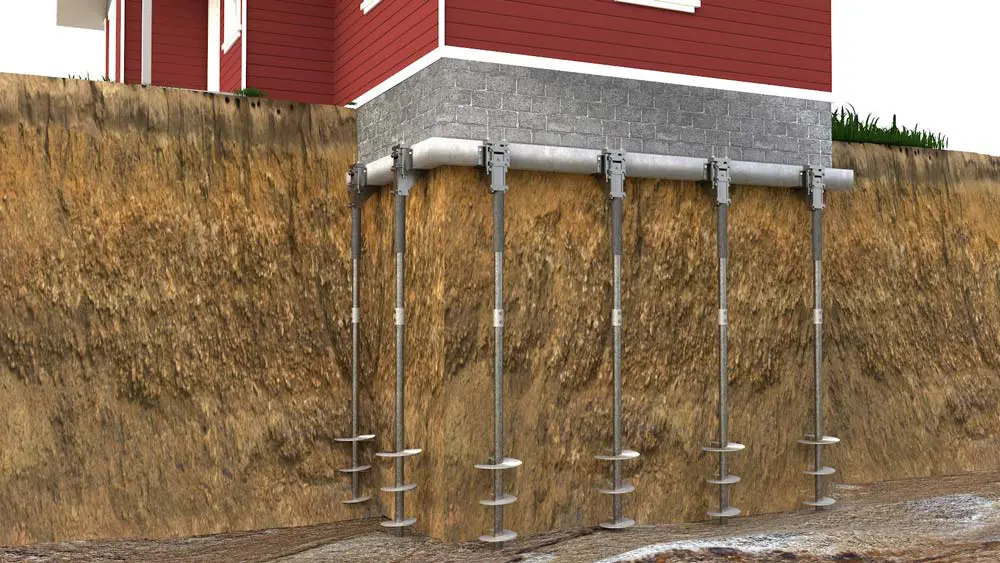
For bowed and/or cracked foundation walls
Another common foundation issue is basement walls are bowed or cracked from hydrostatic pressure. Hydrostatic pressure happens when excess moisture in the soil around the foundation can’t drain off. Hydrostatic pressure pushes against the foundation walls causing them to bow or crack.
There are several options available for repairing bowed or cracked basement walls, including the following:
- Carbon fiber straps – These are applied to the walls and provide additional support to prevent further bowing or cracking.
- Helical tieback anchors – These are installed by drilling a hole through the foundation wall and into the ground on the other side. A steel anchor is then installed through the hole and connected to the wall with a steel rod. This helps to stabilize the wall and prevent further damage.
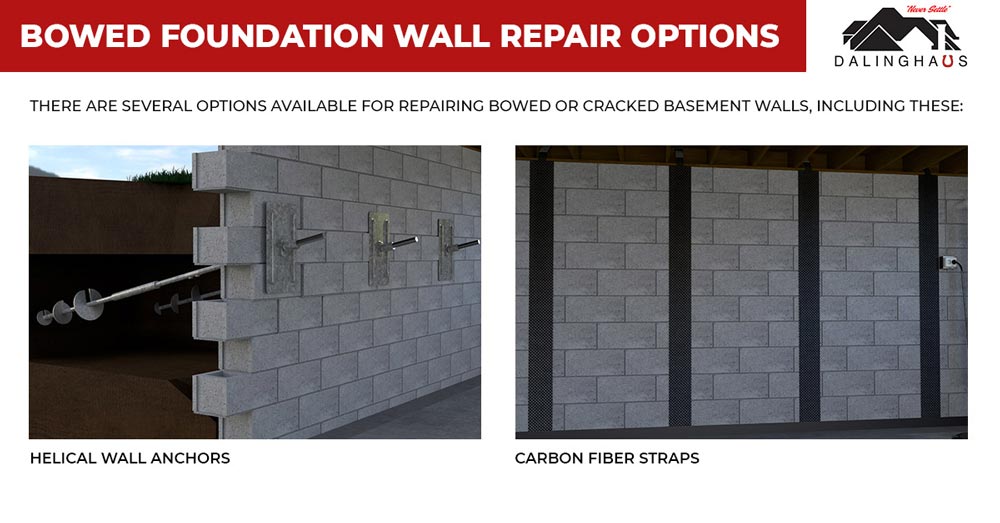
Various foundation repair options are available depending on the specific issue. Consult with a professional foundation repair contractor to determine the best course of action for your home.
For more information, see Why DIY Foundation Repair Is A Bad Idea.
Why Would A Foundation Need To Be Replaced Instead Of Repaired?
There are a couple of main reasons why a foundation may need to be replaced entirely instead of just repaired. These include the following:
- If the foundation is severely damaged, it may not be structurally sound enough to support the weight of the building, even with a repair. In such cases, repairing the foundation would merely be a band-aid solution, as the underlying issues causing the damage would still exist.
- Another important factor to consider is the age of the foundation. The foundation may not be up to current building codes and standards if it is very old. As such, repairing an outdated foundation may not be the best course of action, as the repairs may not bring it up to current standards. In such cases, it may be more cost-effective in the long run to replace the foundation altogether.
Common Signs Of Foundation Problems
Every homeowner needs to know how to identify the signs of foundation problems. The most common symptoms of foundation problems include the following:
- An uneven floor is one of the most common signs of a foundation problem. If your home’s foundation is shifting, it can cause the floor to become unlevel.
- Another sign is cracks in the walls, both inside and outside the house. The severity of these cracks can vary (horizontal cracks are usually more serious than vertical cracks). Still, if cracks are present, it’s essential to get them checked out by a professional.
- Doors and windows sticking or not opening/closing correctly can also indicate foundation issues. Differential settlement can cause the door or window frames to become uneven, causing difficulty in opening and shutting them.
- Gaps between the walls and the ceiling or floor are a warning sign of foundation damage. This separation can be caused by the foundation settling, leaving gaps that can affect your home’s structural integrity.
- Constant water accumulation or moisture in your basement or crawlspace can indicate foundation concerns. When a foundation has shifted or cracked, moisture can enter, leading to mold growth and damaging your home’s interior.
- Stair step cracks in brick or masonry can also be a visible indication of a foundation problem.
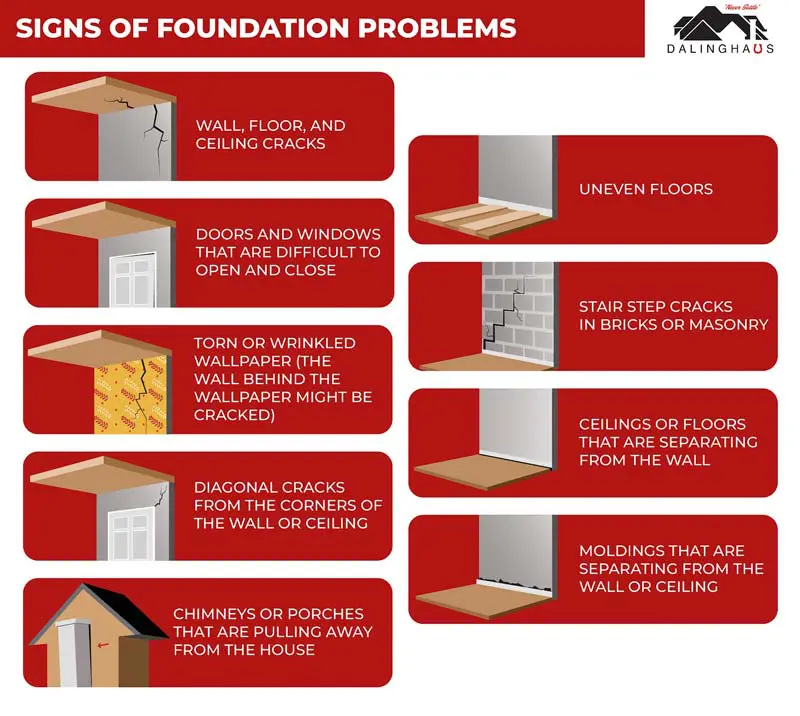
Homeowners need to be aware of the signs of foundation problems. Don’t ignore these warning signs. Seek professional help and address any foundation issues immediately to avoid further damage.
How To Help Prevent Foundation Trouble
Foundation problems can be costly to repair. Fortunately, there are preventative measures that can help avoid trouble. These include the following:
- Regrade the yard so that it slopes away from the foundation. This will prevent water from pooling near the foundation and saturating the soil, causing foundation issues.
- Use downspout extensions to divert water away from the foundation before release.
- Maintain gutters and keep them free of debris. This will prevent water from spilling over the side of your house and soaking the ground around the foundation.
- Avoid planting vegetation too close to the foundation. Trees and other vegetation can draw moisture from the soil, drying it out and causing it to shrink. This can lead to foundation settlement and cracks in the concrete. If you plant water-hungry flowers or shrubs, you’ll need to add water to the ground around the foundation, and this is what you need to avoid.
- Installing a drain tile system is essential for preventing foundation problems. A drain tile system prevents excess moisture from building up in the soil around the foundation.
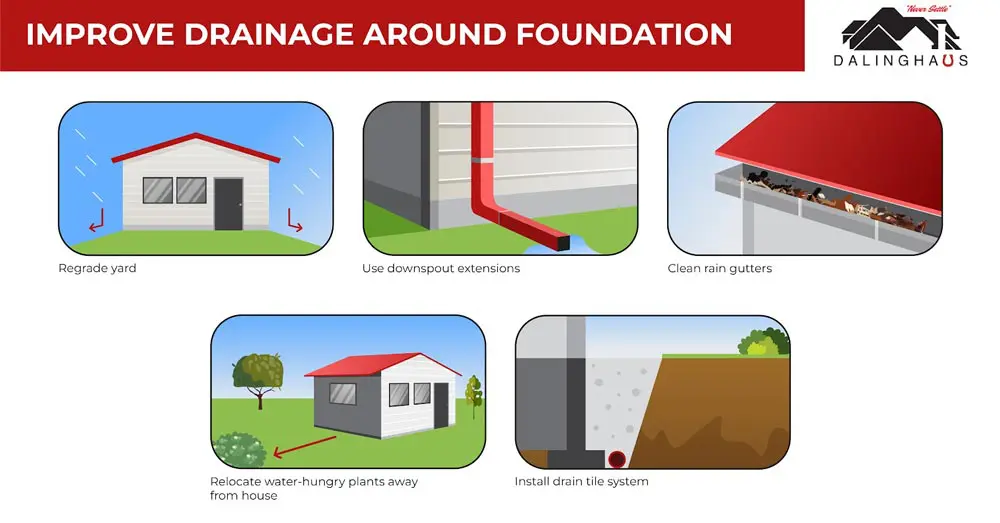
If you think your home’s foundation might need to be replaced, contact us today and schedule a foundation evaluation. It’s possible that the foundation only needs to be repaired. We serve Southern California, Arizona, and Nevada.






